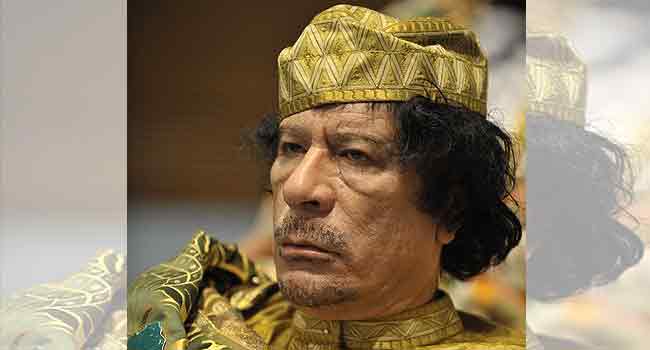Libya In Chaos Since Death Of Gaddafi

Libya, where rival authorities and numerous militias are vying for power, fell into chaos after the fall of strongman Muammar Gaddafi in October 2011.
Gaddafi, who ruled Libya for 42 years, is killed on October 20, 2011, as he tries to flee his hometown Sirte.
Three days later, the former rebel National Transitional Council (NTC) declares Libya’s “total liberation” after a NATO-backed uprising that began in February.
On August 8, 2012, the NTC hands over power to the transitional General National Congress elected a month earlier.
– Rise of radical groups –
US ambassador Chris Stevens and three other American staff are killed in a September 11, 2012 attack on their consulate in second city Benghazi. The jihadist group Ansar al-Sharia, linked to Al-Qaeda, is accused of being behind the attack.
On April 23, 2013, a car bomb attack targets France’s embassy in Tripoli, injuring two French guards.
Violence is widespread. Libya plunges further into chaos with foreign delegations pulling out of the country.
– Rival governments –
Military strongman Khalifa Haftar, backed by Egypt and the United Arab Emirates, launches an offensive in mid-May 2014 against Islamist groups in Benghazi.
Several military officers, including from the air force, join his paramilitary Libyan National Army.
In June 2014, following legislative elections, the General National Congress is replaced by a parliament dominated by anti-Islamists.
In August 2014, after weeks of deadly clashes, Islamist-led militias grouped under the “Fajr Libya” (Libya Dawn) banner storm Tripoli and set up a “national salvation” government.
The government of Abdullah al-Thani and the parliament elected in June, the only ones recognised internationally, take refuge in eastern Libya.
The country finds itself with two governments and two parliaments.
– IS profits from chaos –
The Islamic State group claims its first attack in Libya in December 2014. The following June, IS seizes Sirte, 450 kilometres (280 miles) to the east of Tripoli, but is driven out of the coastal town in December 2016.
– Skhirat accord –
On December 17 2015, after months of negotiations, accords signed under UN supervision in Skhirat, Morocco designate a UN-backed Government of National Accord (GNA) as the “only legitimate government of Libya” in the eyes of the international community.
On December 23, the UN Security Council endorses the accord.
On March 12, 2016, the GNA takes up office in Tripoli headed by prime minister Fayez al-Sarraj, who arrives in late March by sea from Tunis.
The GNA is opposed by the rival administration in the east of the country, backed by Haftar, and by the parliament elected in 2014.
On December 14, 2017, despite the failure of attempts to amend the accord, the UN says the Skhirat accord is the only viable framework for ending Libya’s political crisis.
On December 17, on its second anniversary, Haftar says the mandate of the GNA has run out after what he says is the expiry of the Skhirat accord.
On December 18, the mayor of Libya’s third-largest city Misrata is abducted and killed by unidentified assailants.
– Slaves –
Amid the insecurity and political chaos, Libya becomes a major transit hub for hundreds of thousands of African migrants trying to reach Europe by sea.
International community reacts in horror over reports of migrants detained in Libyan camps being sold into slavery.
No comments:
Post a Comment